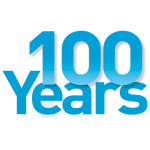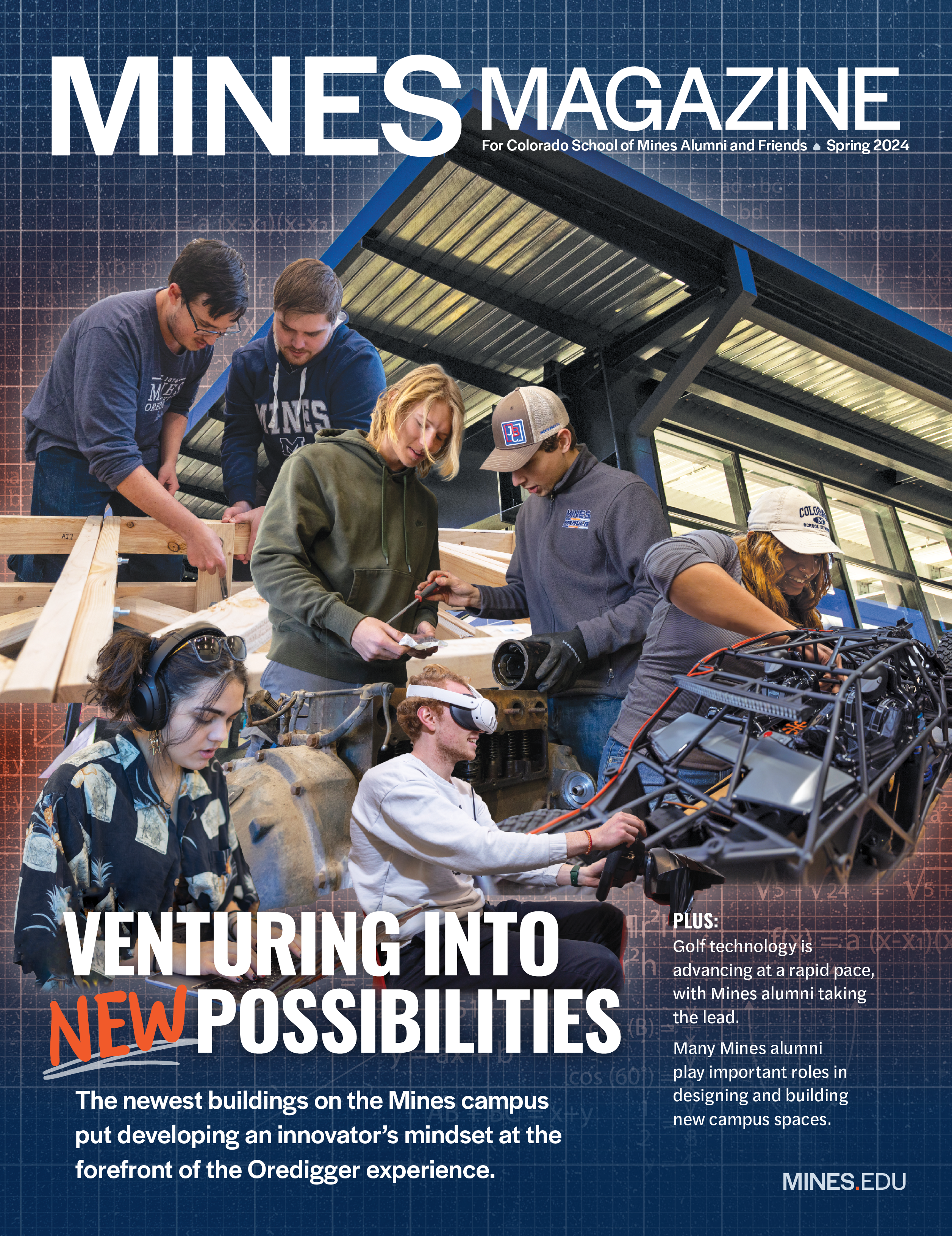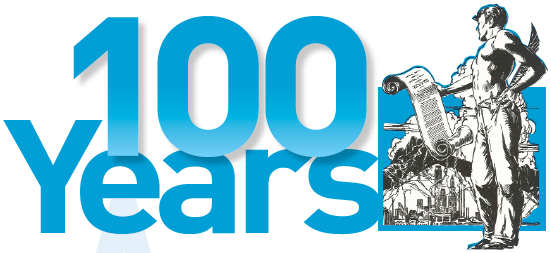
As in part I, our survey of the last five decades of Minesmagazine is generated with a broad brush: excerpts are only from those issues published in the first year of each decade. Complete text of every article referenced below may be read in the100 Year Archives, which include fully searchable PDF files comprising every issue of Mines magazine published during the first year of each decade since 1910 (108 issues; 5,000 pages).
Part I of this article ended with the following, taken from the 50th Anniversary Issue of Mines magazine published in October 1960:
The MINES Magazine has recorded the activities of these men for a half century, and we look forward to the next half century in which The MINES Magazine will continue to play an important part in recording the events of an astounding era.
Given that these words were written before the Apollo program, at a time when computers were the size of an average living room and construction of the Interstate Highway System had barely begun, they seem to resound prophetically across the intervening decades. It was already a period of rapid change, but could the author have had a sense of just how astounding the next 50 years would be? This article’s journey through a half-century of Mines magazines provides an interesting lens through which to view the acceleration of technology.
1970
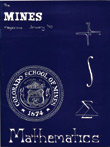 Environmental concerns and energy are the major themes in the issues from 1970. In the August issue, the article titled ‘Pollution Causes Climate Change’ discusses concerns about industrial particulates in the atmosphere cooling the planet by increasing cloud formation and shielding solar radiation, while also pointing to the concerns of atmospheric scientists that growing amounts of CO2 in the atmosphere may ultimately cause average global temperatures to rise. The need for environmental stewardship and capping population growth are the key points he aims to make: “It has become obvious that we can no longer afford to operate under the assumption that infinite growth is possible on a finite planet.”
Environmental concerns and energy are the major themes in the issues from 1970. In the August issue, the article titled ‘Pollution Causes Climate Change’ discusses concerns about industrial particulates in the atmosphere cooling the planet by increasing cloud formation and shielding solar radiation, while also pointing to the concerns of atmospheric scientists that growing amounts of CO2 in the atmosphere may ultimately cause average global temperatures to rise. The need for environmental stewardship and capping population growth are the key points he aims to make: “It has become obvious that we can no longer afford to operate under the assumption that infinite growth is possible on a finite planet.”
The impact of energy consumption on the environment is addressed in the February issue in the article, ‘Air Pollution and Atomic Power,’ by C.K. Viland ’29. It’s an environmental case for nuclear power that highlights the safety of the industry and aims to undermine ‘unfounded prejudices’ surrounding nuclear power.
Another article seeks to dissolve prejudice against offshore drilling in the wake of a blowout in the Santa Barbara Channel earlier that year. Found in the November issue, ‘Offshore Petroleum and the Environment,’ argues that it is “imperative to the nation’s domestic security and economic growth that the seaward search for oil and natural gas continue.” The author makes the case with arguments related to topics familiar to modern readers, including dependence on foreign oil, the adequacy of government regulation, use of blowout preventers, sophisticated drilling technology and a strong past safety record.
1980
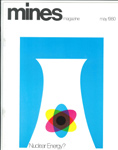 When one fast-forwards 10 years to 1980, it is clear that changes at Mines magazine are under way. There are fewer technically oriented articles, and the issues are shorter. It was an inevitable development: As professional journals evolved to meet the needs of increasingly sophisticated and compartmentalized technical fields, the role Mines magazine had been playing was undermined.
When one fast-forwards 10 years to 1980, it is clear that changes at Mines magazine are under way. There are fewer technically oriented articles, and the issues are shorter. It was an inevitable development: As professional journals evolved to meet the needs of increasingly sophisticated and compartmentalized technical fields, the role Mines magazine had been playing was undermined.
The May issue, which came out a little more than one year after the partial meltdown at Three Mile Island, includes two articles focused on nuclear power. With public support for nuclear power at a new low, both authors make the case for continued expansion of the sector. “It is my hope that the lessons learned from this traumatic event will provide the basis for a stronger, safer and more viable nuclear industry in the U.S.,” writes Bernhard Cherry in ‘Aftermath of Three Mile Island.’ Similarly, Irving Shapiro’s article, ‘Nuclear Option,’ states, “By any comparative standard, nuclear power is surely one of the safest bets we could make. It may prove to be less hazardous than the use of coal-fired plants.” The accident had a powerful impact on public opinion and was a major contributor to the stagnant global growth of nuclear power in the decades that followed.
Other interesting articles from the year’s issues discuss geothermal energy, wave power, oil shale, and the economic impact of federal mining regulations. The April issue includes a discussion of the future of China’s oil industry in which the author points out that China’s petroleum industry dates to at least 3,000 B.C.
1990
Derek Wilson’s ‘Campus Computing in the 1990s: Building an Environment for People,’ found in the October issue, predicts the future architecture of the campus computing environment and points out that “High speed, full function access to the campus network from faculty and student homes will become an issue for many.”
Wilson, who continues to head up information technology on campus, underscores the importance of the National Science Foundation’s work integrating the nation’s regional computer networks, which had grown organically during the ’70s and ’80s. In what may be the first reference to the term ‘Internet’ inMines magazine, Wilson explains, “The NSFNET and the regional networks create the Internet, an international ‘network of networks.'” He points out its reach by recounting how a professor kept in touch with campus over the network using ‘electronic mail’ during a recent semester in Holland.
The May issue features a story about tunnel construction that was part of extending I-70 through Glenwood Canyon, the last stretch of highway needed to complete the Interstate Highway System as originally conceived. The company building the tunnels, Frontier Kemper Constructors, was founded by Dyke Howell ’63 and Dan McFadden ’63, and several alumni worked on the historic project.
2000
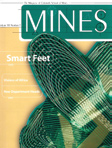 The magazine greeted the new millennium with features titled ‘Crow Native American Earns a Mines Ph.D. in Geology,’ and ‘Colorado School of Mines in the 21st Century.’ The late Robert Sorgenfrei, librarian/archivist of Arthur Lakes Library at the time, wrote a number of interesting historical essays for the magazine during the year. Two of these relate to De Re Metallica, the handbook for mining that was published in 1556, a copy of which is carried at the head of the academic procession at every Mines commencement.
The magazine greeted the new millennium with features titled ‘Crow Native American Earns a Mines Ph.D. in Geology,’ and ‘Colorado School of Mines in the 21st Century.’ The late Robert Sorgenfrei, librarian/archivist of Arthur Lakes Library at the time, wrote a number of interesting historical essays for the magazine during the year. Two of these relate to De Re Metallica, the handbook for mining that was published in 1556, a copy of which is carried at the head of the academic procession at every Mines commencement.
In April the school and the alumni association entered into an important new agreement to produce Mines magazine jointly. The first collaborative issue, which came out in August, included features titled ‘Smart Feet Help Diabetics Avoid Surgery,’ ‘Students Help Develop Better Heart Valves for Children,’ ‘Stones that Fall from Heaven,’ ‘Visions of Africa’ and ‘For Applied Anything, Mines is the Best.’
2010 and Beyond
The contemporary Mines magazine is a far cry from most issues published during the 20th century. The publication was primarily a source of technical information for a highly specialized group of professionals during most of that period, keeping them up to date with the latest research and technology of the extractive industries. Today, the school is a far more diverse institution, and it would be inappropriate for the magazine to publish anything resembling a technical paper.
Instead, during 2010, Mines reported on the careers of faculty and alumni, including a national leader in cancer research, the former director of the NSF and the owner of an oil company who is pouring millions into philanthropy. The magazine also discussed the high number of women currently in student leadership positions and the remarkable success of the school’s various athletic programs in recent years. Mines also delved into more traditional topics like steel research, mine safety, capital construction and the building of the Hoover Dam Bypass Bridge. During the past year the magazine, which has been online since 2007, also launched an updated website and recently ventured into audio podcasting and videos.
What purpose does this all serve? It’s a question open to debate, but a few things are self-evident. Colorado School of Mines matters to many. The school’s alumni, students, faculty, staff, administrators and friends constitute a complex global community of interwoven relationships and shared values. By featuring stories about their lives and accomplishments, by reporting on research and providing news about campus, Mines magazine fosters these connections; the publication, and the alumni association that has kept it vital for more than a century, is an integrating force for the broader Mines community, strengthening the school and enriching the lives of those it serves. It is an important endeavour, and one we look forward to continuing with another century of Mines magazine.
Nick Sutcliffe and Bill Eckley

